History
In the historic region of the Marchesato of Crotone, crossed by the ancient Neto River and set in a landscape of gentle hills — a natural gateway between the Sila mountains and the Ionian Sea — Pecorino Crotonese DOP is born. It takes its name and unmistakable flavor from this very land.
Since the time of Magna Graecia, the city of Kroton was renowned for its flourishing pastoral activity. In the Georgics, Virgil sang of the beauty and uniqueness of the pastures along the banks of the Esaro River and of the herds sacred to Hera, which grazed on the Lacinian promontory.
Legend has it that Hercules brought his flock to these fields, and over time, Pecorino Crotonese became a prized source of nourishment and energy for the soldiers stationed at the castle.
Learn more
The cheesemaking tradition dates back to the dawn of time. Behind the creation of this cheese lie ancient methods that have remained unchanged for millennia. Shepherds, guided by the stars during the seasonal transhumance, would leave the cold, snow-covered plateaus of the Sila mountains to reach the milder Ionian coast.
Fairs and festivals—vital moments for local communities—were occasions for trading livestock and gathering prized dairy products, essential for a life deeply rooted in rural customs.
Over the years and centuries, Pecorino Crotonese became an increasingly sought-after delicacy, enjoyed by nobles, clergy, landowners, and local officials. This led to the first exports to Naples—a clear testament to the cheese’s exceptional quality.
Exports grew significantly during the Austrian Viceroyalty in the 18th century, further establishing the reputation of Pecorino Crotonese, which soon began to be imitated far and wide.

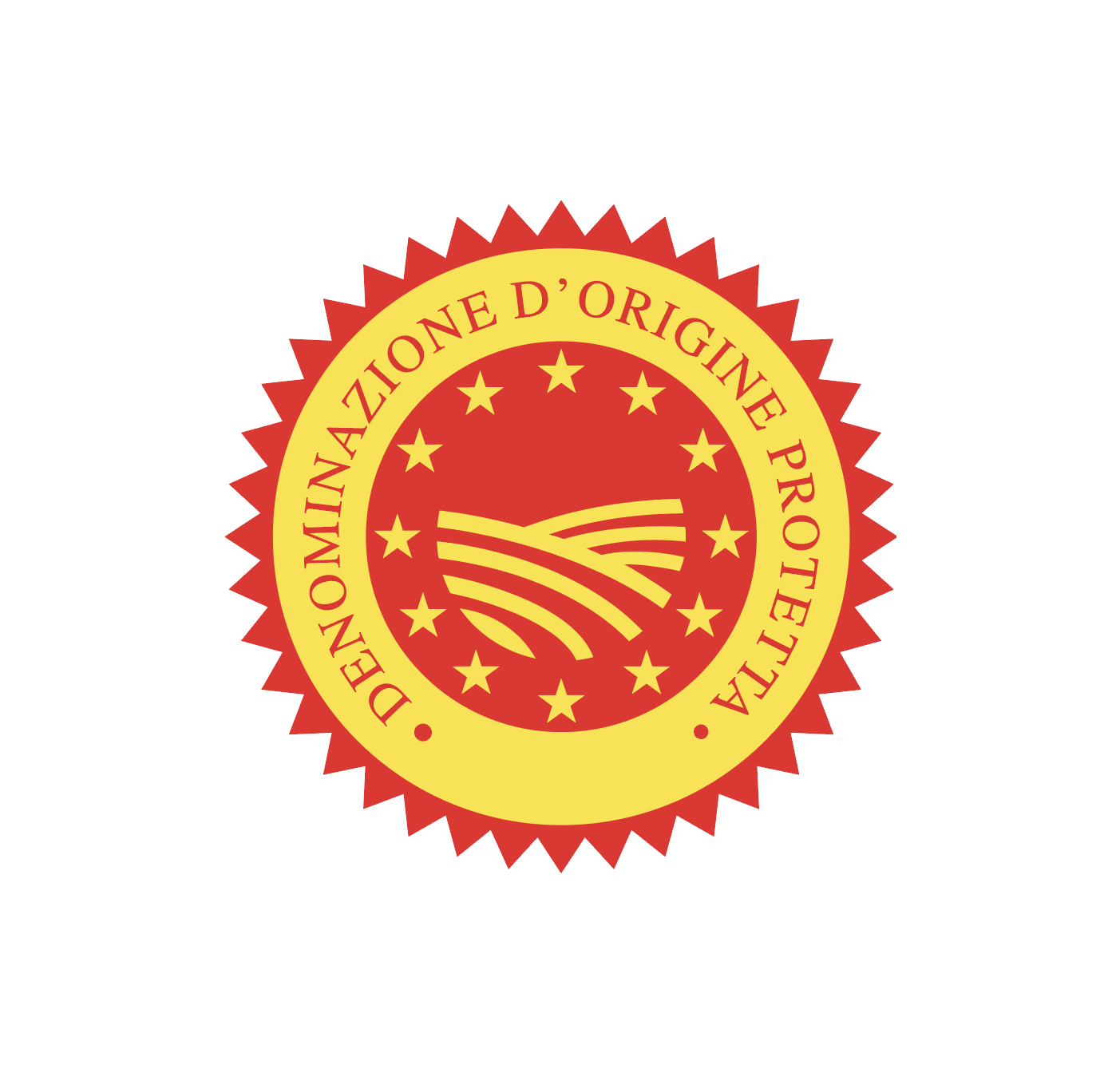
DOP
The Protected Designation of Origin (PDO) mark of Pecorino Crotonese is a seal of guarantee for a cheese that has been produced in the Marchesato of Crotone for centuries. Its deep bond with the land is reflected in its very name, and its history is more significant than one might imagine.
The name of the city of Crotone alone was enough to identify this specific type of cheese—pecorino—even beyond the borders of Calabria. The PDO recognition officially certifies this historical and anthropological link between the cheese and the territory, as well as its age-old cheesemaking tradition.
Pecorino Crotonese is truly one of a kind among all pecorino cheeses, distinguished by its mild flavor and delicate aromas—a true guarantee for consumers. Its quality is shaped by the geographic environment, by the nature of the land rich in native plant species, by the climate, and by a production and transformation process that takes place exclusively here, and nowhere else.
Aging Process
Pecorino Crotonese has been produced in the same way for millennia. The art and knowledge passed down by ancient cheesemakers are essential during the aging phase. We know how to care for the pecorino once it takes shape. We know when and how to intervene. We understand which surface molds enhance its flavor and which must be removed. We carefully select the properly crafted wheels, separating them from those with defects.
We are masters of time: we choose the exact moment to turn the wheels, brush or wash them, and coat them with olive oil. When brought to the table for tasting, as soon as the wheel is cut, it releases a delicate aroma of sheep’s milk, harmoniously blended with hints of hay, mature wild herbs, and a distinctive note of hazelnut and smoke.
Among the three aging types, the “Stagionato” (aged) is the one most closely tied to tradition. However, the “Semiduro” (semi-aged) has become the preferred choice today, offering a more delicate combination of scents and flavors, and leaving behind a superb and inimitable taste unlike any other pecorino.
Learn more
Aged Pecorino Crotonese…with a hard, brown rind, sometimes coated with olive oil or olive dregs (morchia). Its flavor is intense and bold, with a slight piquant aftertaste. The paste is pale straw-yellow in color, with occasional small eyes.
Semi-Aged Pecorino Crotonese…with a thick, slightly brown rind. It offers an intense yet balanced flavor. The semi-hard paste is compact and shows few small eyes.
Fresh Pecorino Crotonese…with a white or pale straw-colored rind. It has a firm, soft, and pleasantly tangy taste, with a thin rind clearly marked by the traditional basket weave. The paste is tender, uniform, and creamy, milk-white in color, with sparse small eyes.
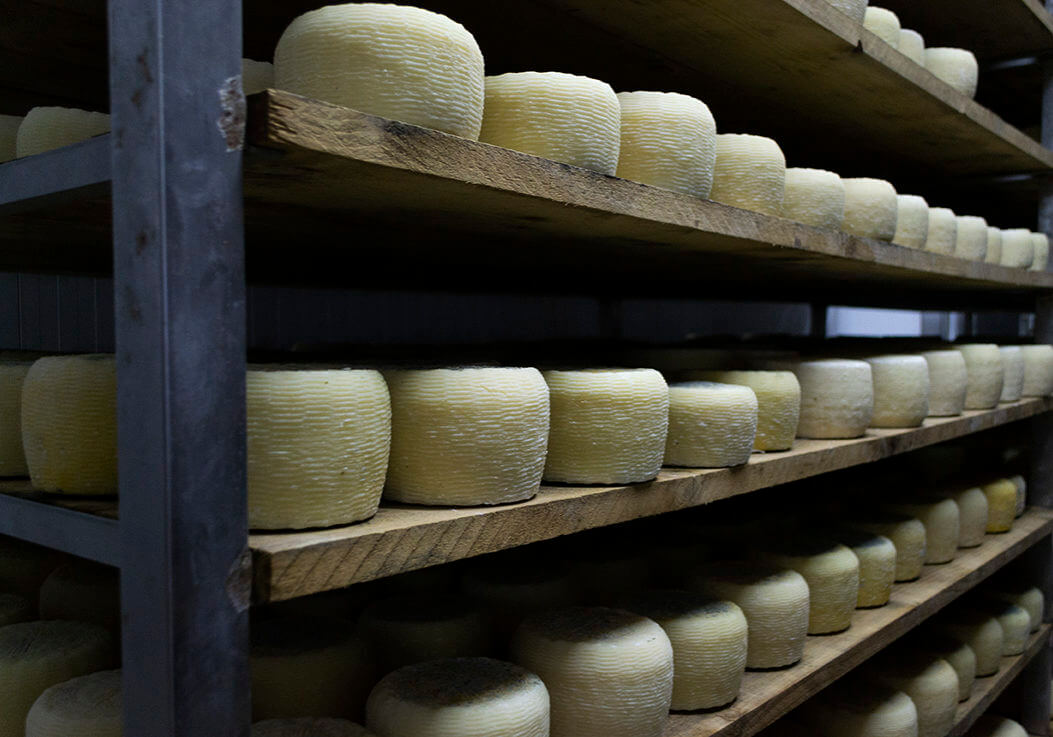
How to Recognize It
It’s simple—first of all, look for the logo. Pecorino cheeses labeled “Crotonese” but lacking the official Consortium logo are not authentic Pecorino Crotonese. The presence of the PDO (Protected Designation of Origin) label is also essential. Weight and size can vary and are considerations for more experienced consumers. But the first two criteria—the logo and the PDO label—are fundamental, and with a little attention, anyone can verify the authenticity of Pecorino Crotonese.
The Logo
To be sure you are purchasing genuine Pecorino Crotonese, check the label. It must display the official Pecorino Crotonese logo, registered with the PDO acronym (Protected Designation of Origin), or the European PDO symbol, which is red and yellow. The logo, inspired by the harmonious lines of the letter “C” for Crotone, also evokes the stylized profile of a sheep’s head.
The Shape
One of the typical features of Pecorino Crotonese is the basket weave pattern impressed on its surface.
Dimensions and Weight
The size varies depending on the cheese’s weight. For wheels weighing between 0.5 kg and 5 kg, the height ranges from 6 to 15 cm, and the diameter from 10 to 20 cm. For aged cheeses matured for more than six months, the wheel can weigh up to 10 kg.
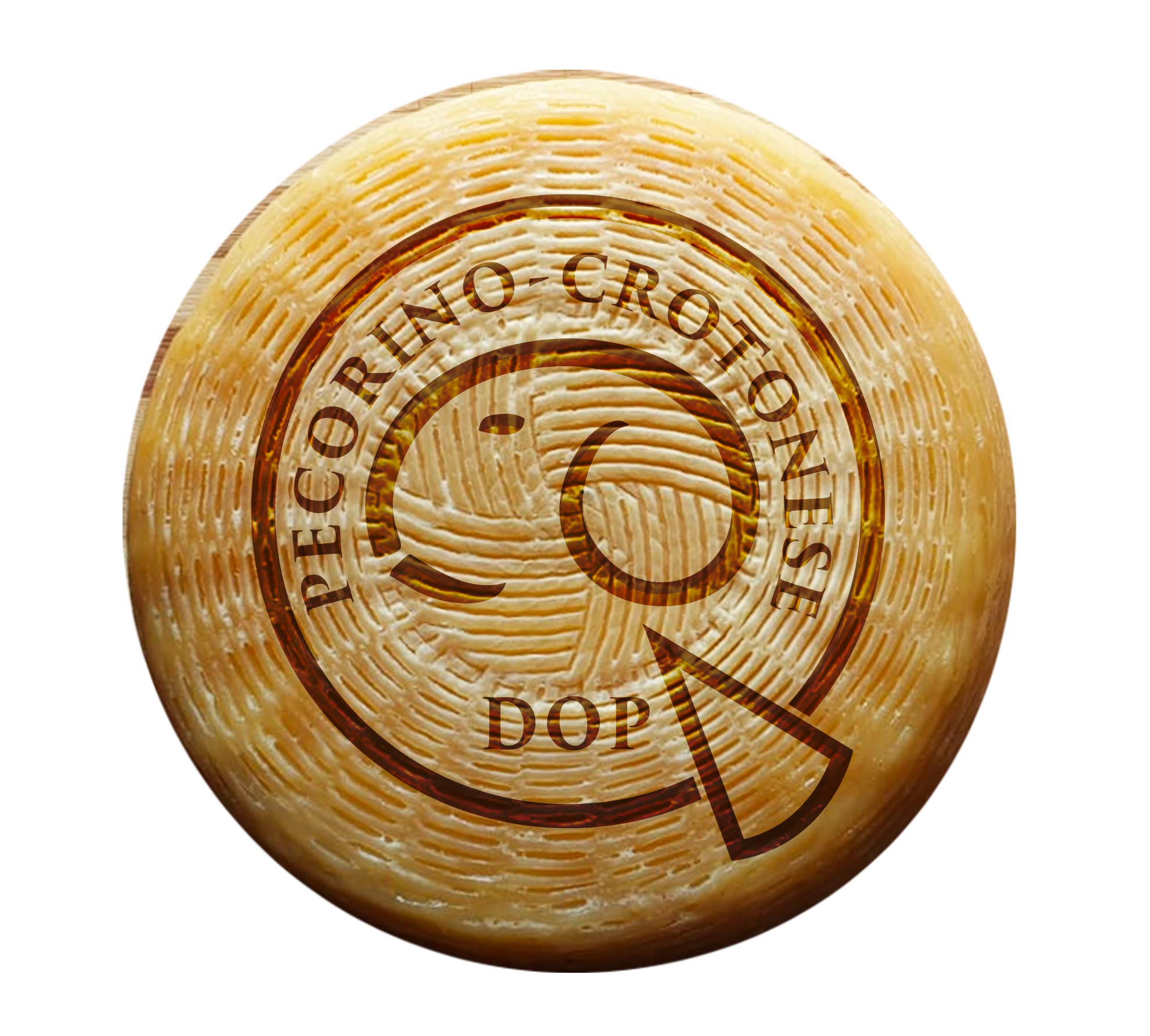
Production
Pecorino Crotonese is the result of a symbiosis between sky and earth, between the rugged inland mountains and the sea on the horizon, where nature stays green year-round and turns golden in summer. The production area includes the provinces of Crotone, Catanzaro, and Cosenza.
Made just as it once was. Today, Pecorino Crotonese is produced using whole sheep’s milk sourced from our local lands—a milk that is pure and carefully monitored. The cheesemaking techniques are those of the past, passed down through generations and preserved thanks to the use of family-based, artisanal labor.
The entire production process was and still is manual—from the initial processing to the “frugatura”, the traditional manual pressing of the curd once placed into the basket molds. The cheese is then left to acidify for one or more days before the aging process begins.
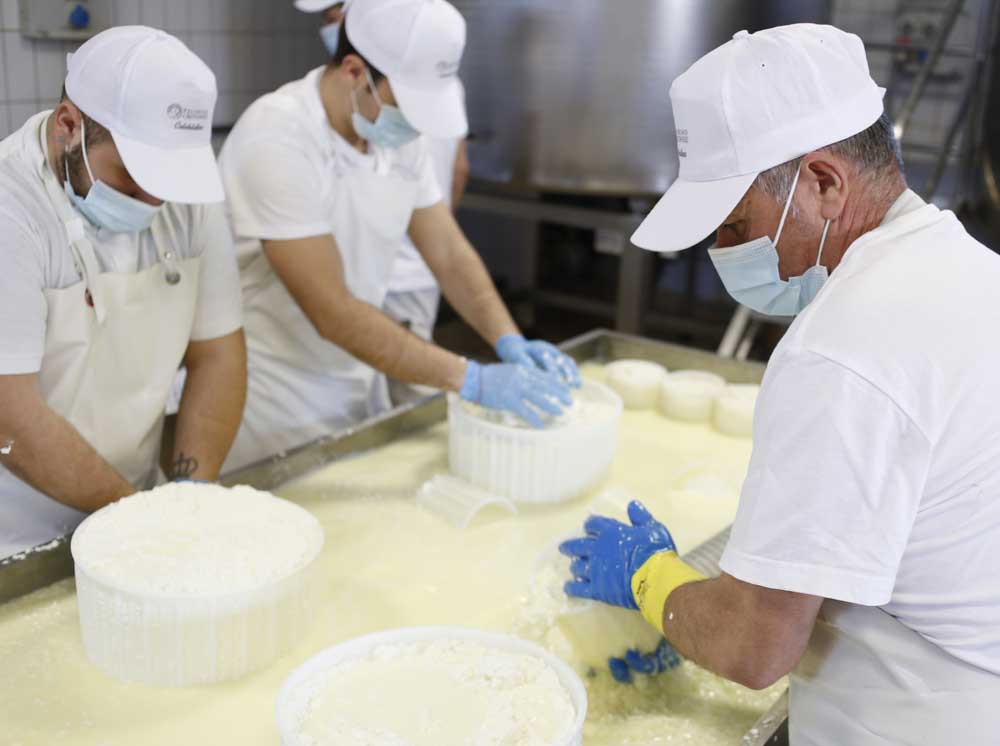
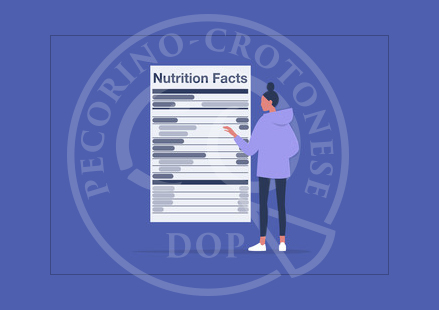
Nutritional Values
Pecorino Crotonese PDO is a food that offers numerous health benefits, as it is rich in essential nutrients, vitamins, proteins, and healthy fats. The calcium it contains, together with vitamin D, helps keep bones, nerves, and muscles strong and healthy. It also supports the regulation of metabolism.
In short, it’s good for the body—and good for everyone: for those still growing, and for adults who, in just one bite, can meet many of their daily nutritional needs. It’s an excellent source of energy. Even in ancient times, because of its nutritional qualities, it was offered to soldiers stationed at the castle.
If you’re not lactose intolerant but experience mild digestive issues, you can fully enjoy Pecorino Crotonese PDO, as it is highly digestible. We especially recommend the semi-aged or even better the aged variety, since the longer and more carefully the cheese is matured, the more digestible it becomes.
Now you know what to choose—so you don’t have to give up on taste or nutrition.

